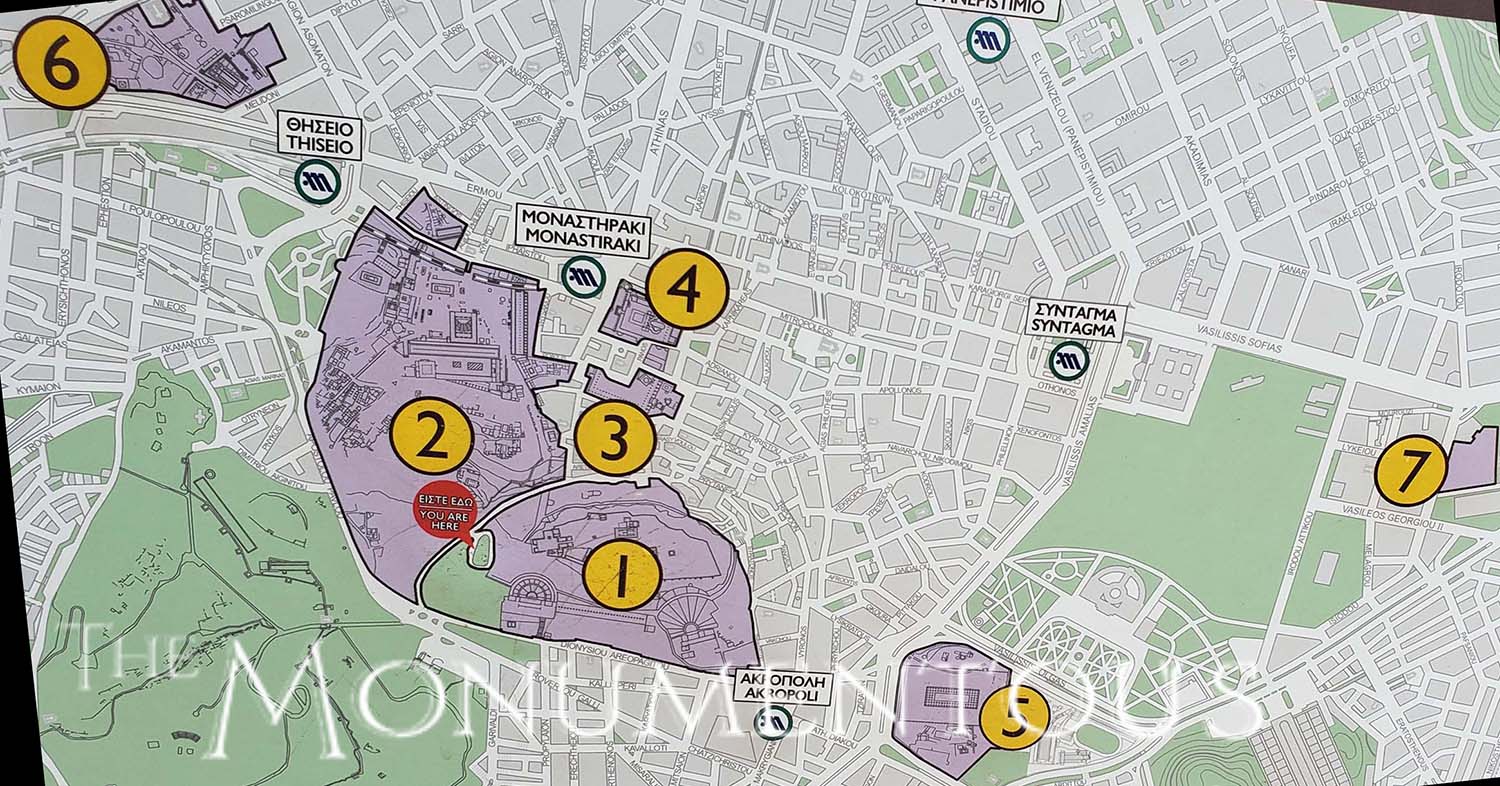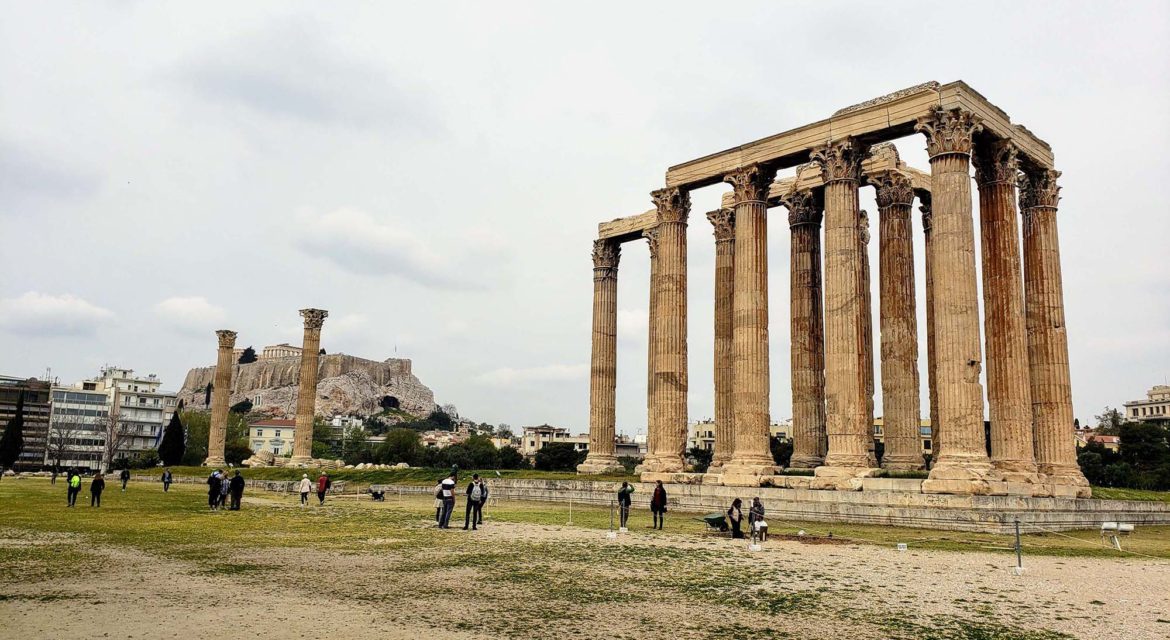 To say that Athens, Greece has multiple monuments and landmarks that are worth seeing is an understatement. While sites like Syntagma Square and Plato’s Academy Park have been able to showcase the potential impact monuments can have on an entire community, the multiple landmarks that can be seen with Ancient Athens combined ticket provide incredible access to the ancient and modern culture of the city with a single ticket.
To say that Athens, Greece has multiple monuments and landmarks that are worth seeing is an understatement. While sites like Syntagma Square and Plato’s Academy Park have been able to showcase the potential impact monuments can have on an entire community, the multiple landmarks that can be seen with Ancient Athens combined ticket provide incredible access to the ancient and modern culture of the city with a single ticket.
With this ticket, visitors can get access to sites that range from the Ancient Agora to the Tower of the Winds to Aristotle’s Lyceum to the Acropolis of Athens. Since they’re spread across the city modern city, this access has enabled anyone with the Ancient Athens combined ticket to see numerous parts of the city. It’s something that has had a positive influence on the economy and culture of modern Athens.

Experiencing Ancient and Modern Athens
While the Acropolis of Athens is undoubtedly the most notable attraction in the city, it’s far from the only one that has historical and cultural significance. That’s why the Ancient Athens combined ticket for archaeological sites includes entrance to seven distinct landmarks across the city:
- The Acropolis of Athens
- The Ancient Agora of Athens and the Museum of the Ancient Agora
- Kerameikos and the Archaeological Museum of Kerameikos
- The Temple of Olympian Zeus (Olympieio)
- The Roman Agora of Athens and the Tower of the Winds
- Hadrian’s Library
- Aristotle’s Lyceum (Archaeological site of Lykeion)
These structures and sites are all in vastly different states of ruin and disrepair, providing visitors with a variety of perspectives. For example, the Temple of Hephaestus in the Ancient Agora is the best-preserved temple in all of Greece and was being actively utilized until 1934. Conversely, very little beyond the foundations of building in Aristotle’s Lyceum can be seen, while the Temple of Olympian Zeus only has fifteen surviving columns.
 The Museum of the Ancient Agora, which is located inside the Ancient Agora, provides visitors with something very different. The modern museum resides in the Hellenistic Stoa of Atallos, which was rebuilt in the 1950s from the ground up. This was done to store the artifacts unearthed in the Agora excavations, and to house the museum where the most important items can be exhibited.
The Museum of the Ancient Agora, which is located inside the Ancient Agora, provides visitors with something very different. The modern museum resides in the Hellenistic Stoa of Atallos, which was rebuilt in the 1950s from the ground up. This was done to store the artifacts unearthed in the Agora excavations, and to house the museum where the most important items can be exhibited.
These sites and structures are spread across the city of Athens, providing visitors with a sense of both the ancient and modern city. By creating a ticket that sends viewers to specific locations throughout the city, the experience allows visitors to get an incredible sense of the history and context that is associated with both.

The History and Context of Ancient Athens
The cultural relevance of all the sites that are accessible via the Ancient Athens combined ticket is impossible to understate, but that relevance can mean something different to viewers depending on their familiarity with each of these structures and sites. The information displayed at each has helped to provide context that resonates with viewers regardless of how familiar they are or are not with each.
The Parthenon is the most notable structure on the Acropolis, but the Erechtheion, the Propylaia and the temple of Athena Nike are just a few of the other structures located on the famed hilltop that provide an even more enriching experience. Aristotle’s Lyceum also contains the remains of multiple structures, although far less of them have survived.
The Ancient Agora of Athens and the Roman Agora of Athens allow visitors to walk in the same space as ancient Greeks and Romans once did to get a better sense of everyday life of Athens in different periods of time. Build in the 1st century CE, the Tower of the Winds is nearby the Roman Agora. It was originally used to identify the direction the wind blew.
 The Kerameikos is one of the most important areas of ancient Athens and the Archaeological Museum of Kerameikos helps provide visitors with a sense of that importance. The site was later converted into a burial ground, which eventually became ancient Athens’ most prominent cemetery.
The Kerameikos is one of the most important areas of ancient Athens and the Archaeological Museum of Kerameikos helps provide visitors with a sense of that importance. The site was later converted into a burial ground, which eventually became ancient Athens’ most prominent cemetery.
While not much remains of the Temple of Olympian Zeus, it was one of the largest ever built in Greece. More of Hadrian’s Library remains, although the structure and features of the original building are mixed in with three churches were built at the site.
The entire city has experienced a positive economic impact thanks to this endeavor to create a simple and easy way to access seven notable monuments that are located across Athens. Doing so has also opened up opportunities for businesses in direct and indirect ways all over Athens.

Direct Revenue and Economic Opportunities
Each of the sites that are accessible via the Ancient Athens combined ticket can be purchased separately, providing the city with multiple means of direct revenue. Additionally, museum gift shops and other stores in and alongside these attractions provide stakeholders with another means of revenue.
 Tour groups and guides can also make a living off of taking individuals and groups to the sites and attractions that are included with the single ticket. Guides are focused on telling visitors interesting information and history about the places they’re visiting to make for a more enriching experience. These tour guides range from being single operators to entire companies, and the revenue they’re able to generate has become an important part of the economy for the city.
Tour groups and guides can also make a living off of taking individuals and groups to the sites and attractions that are included with the single ticket. Guides are focused on telling visitors interesting information and history about the places they’re visiting to make for a more enriching experience. These tour guides range from being single operators to entire companies, and the revenue they’re able to generate has become an important part of the economy for the city.
The Ancient Athens combined ticket provides access to monuments that are spread across the city, which allows multiple businesses to be exposed to the people that see them all. These businesses sell everything from food to day trips to memorabilia, providing them with access to people that are helping to fuel the economy of the modern city.
These attractions are part of the maps and guides that draw interest from visitors who are coming in from all over. Additionally, sites like the Pynx and Hadrian’s Gate which aren’t part of the ticket are readily accessible when going from one site to another, providing that much more access to the surrounding businesses.
The direct and indirect economic opportunists that the Ancient Athens combined ticket represents are incredibly important to everyone in the city, but that’s just part of the significance this access represents for the present and future of the city.

Attracting Audiences from Across the World
 Athens recently recorded the highest occupancy rate for hotels, while Greece as a whole attracted 33 million visitors in 2018. While these visitors are traveling to Greece to do more than visit the attractions that are part of the Ancient Athens combined ticket, giving them a detailed option to do so is both significant powerful.
Athens recently recorded the highest occupancy rate for hotels, while Greece as a whole attracted 33 million visitors in 2018. While these visitors are traveling to Greece to do more than visit the attractions that are part of the Ancient Athens combined ticket, giving them a detailed option to do so is both significant powerful.
By combining so many different sites and experiences into a single ticket, the city of Athens has been able to provide visitors with a specific agenda that allows them to make the most of their trip. In doing so, they’ve enabled monumentous experiences that continue to attract audiences of all types from across the world.


